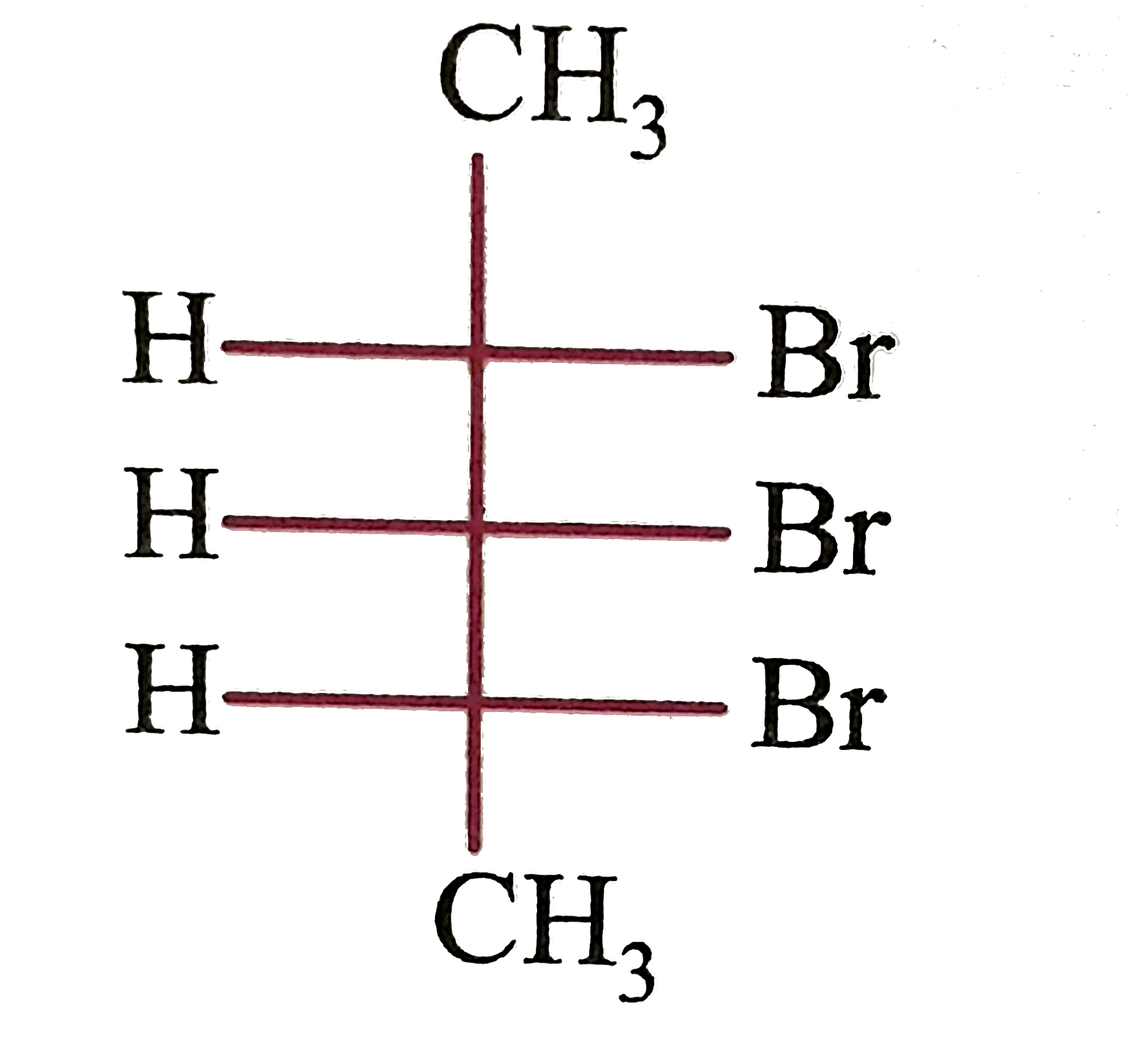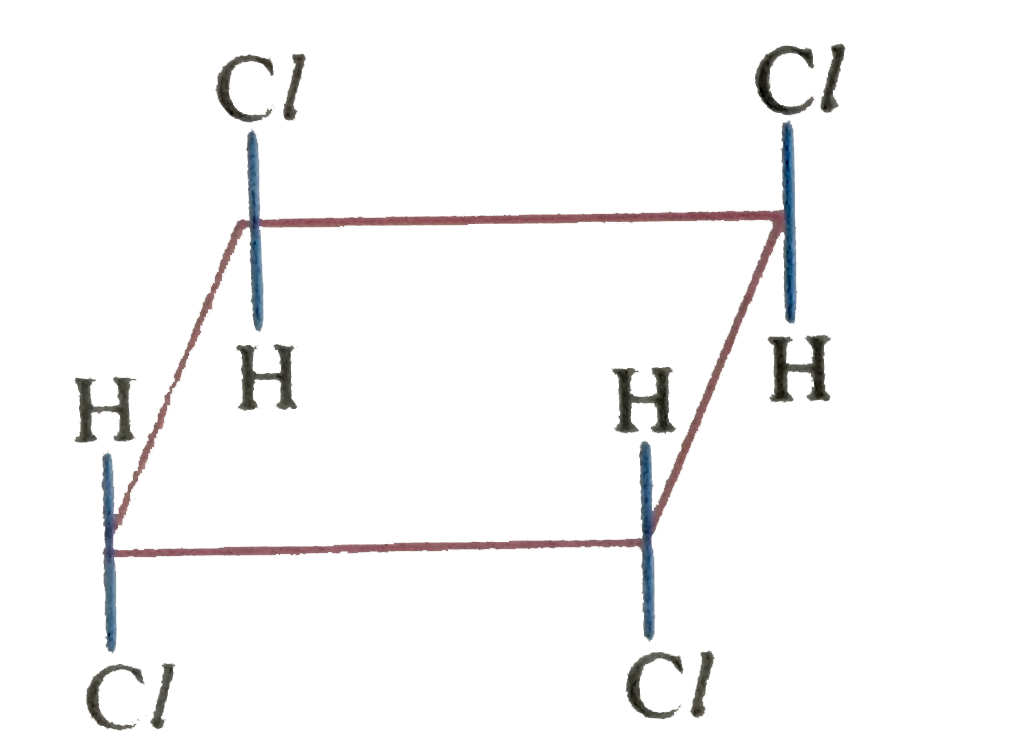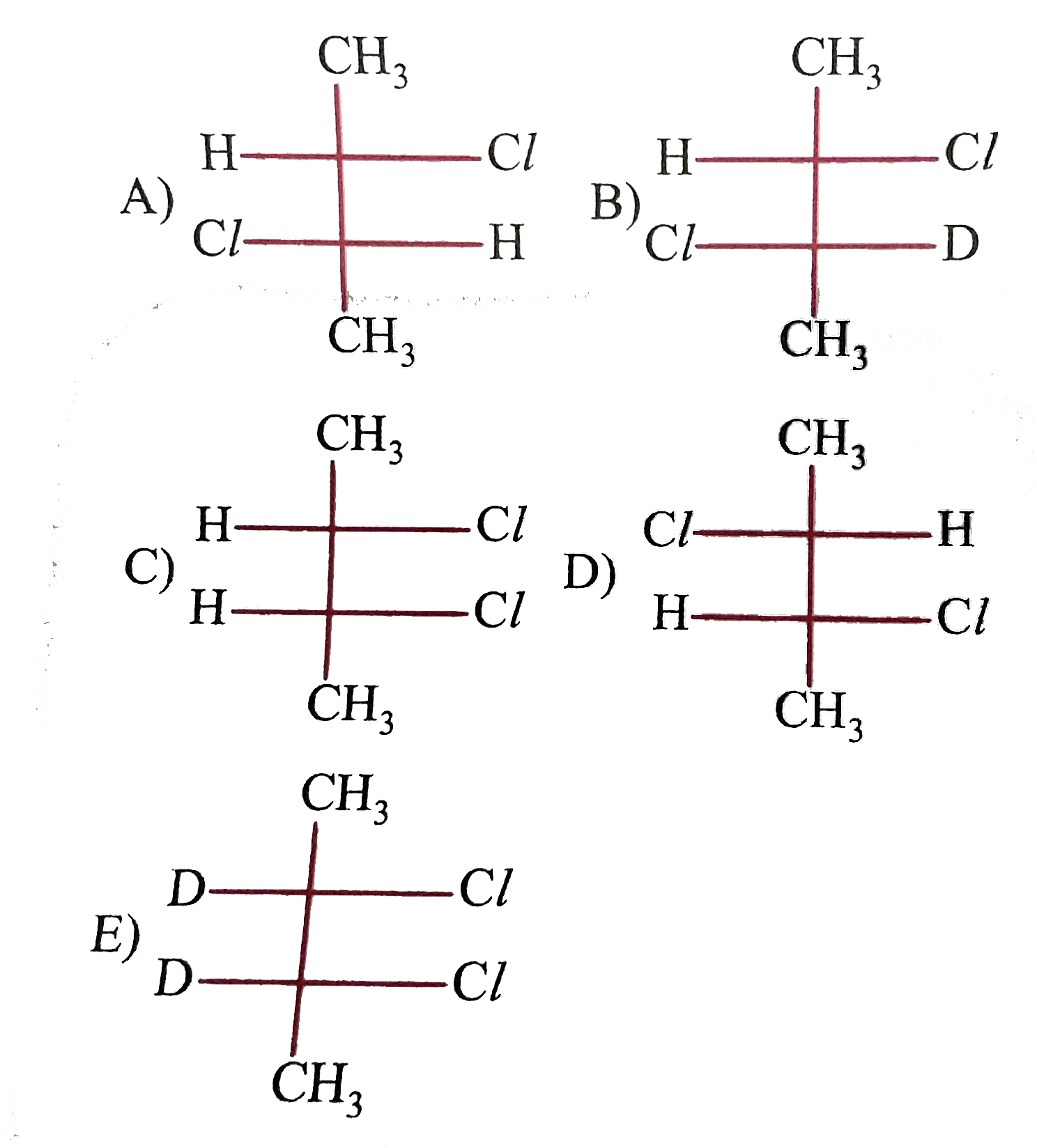An organic compound having a carbon attached to four different group is optically actve, But is it that opposite is also true? That is, do all optically active organic compounds have chiral carbons? Not necessarily. Presence or absence of chiral centre is not the sufficiet criterion for optical activity. The ultimate criterion is presence or abosence of either plane or centre of symmtry. Two compounds which are non super im[osabble mirror images of each other are called enantiomers. If a compound contains more than one chiral carbon, new words are required to describe the relationship between various stereo isomers of the compounds. Those words are diastereomers and mesomers.
A sample of organic compound (S) is found to have optical rotation of +20∘. Which of the following statement(s) is/are correct of the sample.
The sample might be a mixture of d-isomers
All compounds in the sample must be containing chiral carbon
The sample might be mixture of d and I 1 isomers in unequal amounts
The compound(s) in the sample must be chiral
The correct Answer is:1,3,4
Topper's Solved these Questions
- GENERAL ORGANIC CHEMISTRYBOOK - NARAYNACHAPTER - GENERAL ORGANIC CHEMISTRYEXERCISE - COMP 7
1 Videos
- GENERAL ORGANIC CHEMISTRYBOOK - NARAYNACHAPTER - GENERAL ORGANIC CHEMISTRYEXERCISE - COMP 8
1 Videos
- GENERAL ORGANIC CHEMISTRYBOOK - NARAYNACHAPTER - GENERAL ORGANIC CHEMISTRYEXERCISE - COMP 5
1 Videos
- GENERAL ORGANIC CHEMISTRY BOOK - NARAYNACHAPTER - GENERAL ORGANIC CHEMISTRY EXERCISE - LEVEL-II (H.W)
21 Videos
- HYDROCARBONS BOOK - NARAYNACHAPTER - HYDROCARBONS EXERCISE - EXERCISE - 4
18 Videos
Similar Questions
An organic compound having a carbon attached to four different group is optically actve, But is it that opposite is also true? That is, do all optically active organic compounds have chiral carbons? Not necessarily. Presence or absence of chiral centre is not the sufficiet criterion for optical activity. The ultimate criterion is presence or abosence of either plane or centre of symmtry. Two compounds which are non super im[osabble mirror images of each other are called enantiomers. If a compound contains more than one chiral carbon, new words are required to describe the relationship between various stereo isomers of the compounds. Those words are diastereomers and mesomers.

In the above compound no. of stereogenic centers and no. of optical active isomers possible are.
View SolutionAn organic compound having a carbon attached to four different group is optically actve, But is it that opposite is also true? That is, do all optically active organic compounds have chiral carbons? Not necessarily. Presence or absence of chiral centre is not the sufficiet criterion for optical activity. The ultimate criterion is presence or abosence of either plane or centre of symmtry. Two compounds which are non super im[osabble mirror images of each other are called enantiomers. If a compound contains more than one chiral carbon, new words are required to describe the relationship between various stereo isomers of the compounds. Those words are diastereomers and mesomers.

Which of the following statements is/are correct regarding the above compound.
View Solution
Knowledge Check
An organic compound having a carbon attached to four different group is optically actve, But is it that opposite is also true? That is, do all optically active organic compounds have chiral carbons? Not necessarily. Presence or absence of chiral centre is not the sufficiet criterion for optical activity. The ultimate criterion is presence or abosence of either plane or centre of symmtry. Two compounds which are non super im[osabble mirror images of each other are called enantiomers. If a compound contains more than one chiral carbon, new words are required to describe the relationship between various stereo isomers of the compounds. Those words are diastereomers and mesomers.
Optically active compounds among the following isACH3−CH2−CHCl−CH2−CH3BCH3−CH2−CDCl−CH2−CH3CCH3−CH2−CHD−CH2−CH3DCH3−CH2−CHD−CH3An organic compound having a carbon attached to four different group is optically actve, But is it that opposite is also true? That is, do all optically active organic compounds have chiral carbons? Not necessarily. Presence or absence of chiral centre is not the sufficiet criterion for optical activity. The ultimate criterion is presence or abosence of either plane or centre of symmtry. Two compounds which are non super im[osabble mirror images of each other are called enantiomers. If a compound contains more than one chiral carbon, new words are required to describe the relationship between various stereo isomers of the compounds. Those words are diastereomers and mesomers.
Optically active compounds among the following is/are
 AA,B and EBA,B,D and ECB,C, and EDB,C,D and E
AA,B and EBA,B,D and ECB,C, and EDB,C,D and EAn organic compound having a carbon attached to four different group is optically actve, But is it that opposite is also true? That is, do all optically active organic compounds have chiral carbons? Not necessarily. Presence or absence of chiral centre is not the sufficiet criterion for optical activity. The ultimate criterion is presence or abosence of either plane or centre of symmtry. Two compounds which are non super im[osabble mirror images of each other are called enantiomers. If a compound contains more than one chiral carbon, new words are required to describe the relationship between various stereo isomers of the compounds. Those words are diastereomers and mesomers.
Which of the following form diastereomeric pair?
 AA,BBB,CCA,CDD,E
AA,BBB,CCA,CDD,E
An organic compound having a carbon attached to four different group is optically actve, But is it that opposite is also true? That is, do all optically active organic compounds have chiral carbons? Not necessarily. Presence or absence of chiral centre is not the sufficiet criterion for optical activity. The ultimate criterion is presence or abosence of either plane or centre of symmtry. Two compounds which are non super im[osabble mirror images of each other are called enantiomers. If a compound contains more than one chiral carbon, new words are required to describe the relationship between various stereo isomers of the compounds. Those words are diastereomers and mesomers.
The optical rotation of a solution o fpure natural camphor is found to be +5.76∘ under the following conditions, concentration=0.13g/ml, lenghth of polarmeter=1dm, wavelength=sodium D line, T=25∘C The specific rotation of camphor is
View SolutionOptical active compounds have same
View SolutionWhich is a optically active compound ?
View SolutionThe optical rtation of an optically active compound is
View SolutionWhich of the given compound is optically active?
View Solution
